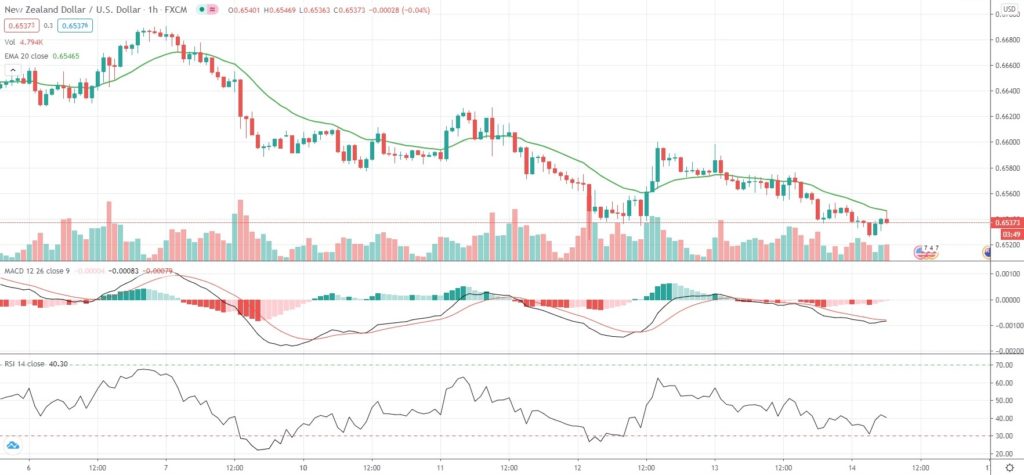NZD/USD extended losses from the prior trading day on Friday and was set to register its third straight week of decline, as a combination of dovish RBNZ policy stance and COVID-19 resurgence in New Zealand mounted pressure on the kiwi dollar.
Reserve Bank of New Zealand expanded its Large Scale Asset Purchase (LSAP) programme from NZD 60 billion to NZD 100 billion at its policy meeting on Wednesday and noted that “additional monetary instruments” might be deployed. RBNZ chief economist Yuong Ha indicated earlier this week that the central bank favored a weaker kiwi exchange rate, as economic risks remain to the downside.
At the same time, New Zealand Prime Minister Jacinda Ardern put Auckland, the country’s most populous city, under lockdown on Wednesday after four new coronavirus cases emerged in a single family living in the area. 13 more new infections have since been confirmed and linked to that family, which marked the end of over three-month period of no COVID-19 cases in New Zealand.
As of 7:01 GMT on Friday NZD/USD was edging down 0.14% to trade at 0.6538, after earlier touching an intraday low of 0.6526, or a level not seen since August 12th (0.6524) – also a one-month low. The major pair advanced 2.70% in July, which marked its fourth straight month of gains. The pair is set for a third consecutive week of losses, currently being down 0.86%.
Today’s market focus will be on the monthly report on US retail sales at 12:30 GMT. Analysts on average expect a 1.9% monthly growth in sales in July, following an increase by 7.5% in June.
Additionally, core retail sales, which exclude large ticket prices and historical seasonality of automobile sales, are expected to increase 1.3% in July, following a 7.3% monthly gain in June.
A separate report by the Board of Governors of the Federal Reserve at 13:15 GMT may show industrial production in the country expanded at a monthly rate of 3.0% in July, according to expectations, after another 5.4% expansion in June. The latter has been the sharpest monthly rate of increase since December 1959, as many businesses restarted operations after coronavirus-related lockdown restrictions.
Manufacturing output probably also rose at a monthly rate of 3.0% in July, following a 7.2% surge in June.
Last but not least, the monthly survey by Thomson Reuters and the University of Michigan may show that consumer confidence in the United States continued to worsen in August. The preliminary consumer sentiment index probably slipped to 72.0 in August from a final 72.5 in July. Last month, the sub-index of current economic conditions was revised down to 82.8 from a preliminary 87.1, while the sub-index of consumer expectations slipped to 65.9, confirming May’s six-year low. The preliminary report is due out at 14:00 GMT.
Bond Yield Spread
The spread between 1-year New Zealand and 1-year US bond yields, which reflects the flow of funds in a short term, equaled 10.4 basis points (0.104%) as of 6:15 GMT on Friday, down from 11.4 basis points on August 13th.
Daily Pivot Levels (traditional method of calculation)
Central Pivot – 0.6561
R1 – 0.6585
R2 – 0.6623
R3 – 0.6647
R4 – 0.6671
S1 – 0.6523
S2 – 0.6499
S3 – 0.6461
S4 – 0.6424






